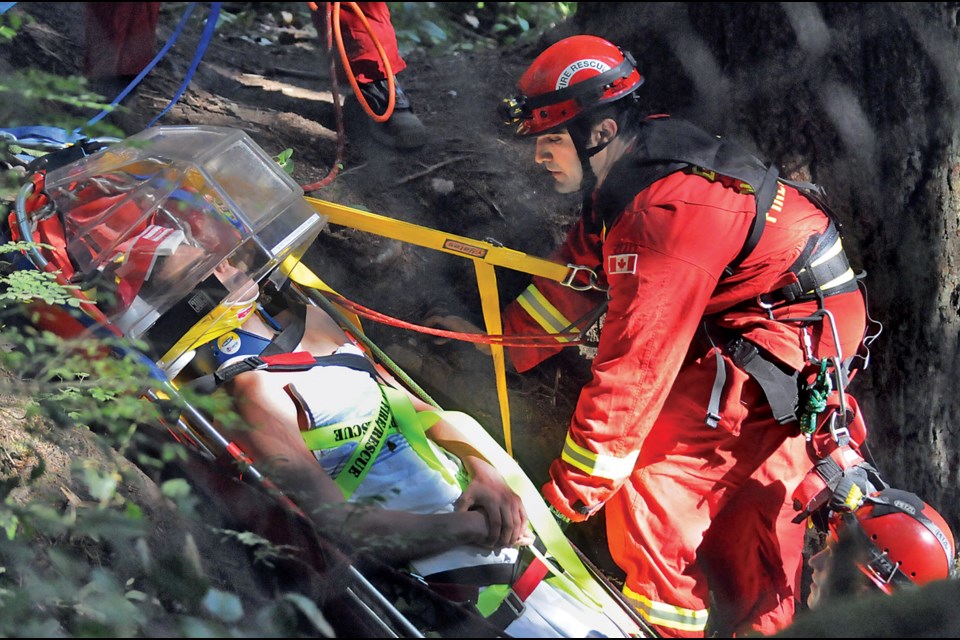A tourist visiting North Vancouver is lucky he isn't more seriously injured after a rough landing from an almost 40-metre drop into Lynn Canyon.
District of North Vancouver Fire and Rescue Services sent 12 members out to rescue the wounded cliff jumper Wednesday afternoon after a report of a possible drowning came in from 9-1-1 dispatch.
"Where he jumped from, it was estimated to be at 125 feet (38 metres) into 90-Foot Pool," said district fire chief Mike Cairns. "They're thrillseekers, jumping from the highest spot, trying to outdo each other. He didn't land straight into the water. He clearly injured his back and possibly spine and his legs.. .. He wasn't able to help himself, probably because he was winded, so two people had to jump into the water and assist him to get out of the river."
Firefighters secured ropes to trees at the top of the cliff and methodically made their way to the injured man, who was part of a group of Irish and Scottish tourists, and packaged him into a basket stretcher. After hauling him back up the canyon's edge, firefighters handed him over to B.C. Ambulance Service paramedics.
The patient was able to move his toes and extremities when firefighters reached him, Cairns said.
"Considering what happened, he seemed to be in fairly good condition," he said.
Cairns said he worries the dangerous activity could become more popular. "We haven't had one of these for a while, but from what I could see, there were other people from that same area so it could become more frequent for us," he said.
The whole process took two hours. Every year, hundreds of people jump from the canyon, which is a high-risk but legal activity. In 1993, the District of North Vancouver began hiring park rangers to patrol the area and warn would-be jumpers, which has cut down on the number of injuries and rescue calls, according to Jeanine Bratina, district spokeswoman. In the 12 years leading up to 1993, there were 17 fatal jumps.
However, it is not known if the injured jumper was one of the hundreds of people park rangers encountered in the park on Wednesday.
"Our Park Rangers cover a very large area while on their patrols including the parking areas, concession areas, trails, bridge, water areas, etc." Bratina said. "While they do speak to as many people as possible, including people interested in jumping into the water, it would be difficult for them to remember every person that they speak with, although they do try to reach as many people as possible during their patrols."



